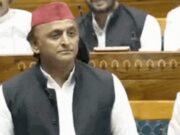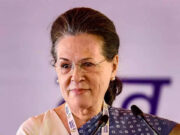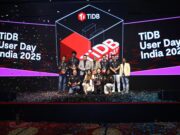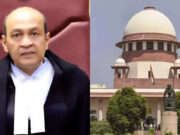Alongside, the pace of digital payment adoption has been equally striking. Unified Payments Interface (UPI) transactions are expected to exceed 100 crore transactions per day by F Y27, as per a report by PwC India, which expects UPI to dominate the retail digital payment landscape, accounting for 90% of transaction volumes over the next five years.
Elevate Your Tech Prowess with High-Value Skill Courses
| Offering College | Course | Website |
|---|---|---|
| Indian School of Business | ISB Product Management | Visit |
| MIT | MIT Technology Leadership and Innovation | Visit |
| Indian School of Business | ISB Professional Certificate in Product Management | Visit |
While Aadhaar and UPI are the most popular digital public infrastructure (DPI) to have come out of India, which are being hailed globally, there are several others taking shape. These include the likes of Account Aggregator, Open Network for Digital Commerce, and Open Credit Enablement Network (OCEN).
India’s Digital Public Infrastructure, which has received a big fillip, due to the Jan Dhan Aadhaar and Mobile trinity, has not just increased access and inclusion for the country’s poor but is also now trying to fix pressing issues related to sustainability and AI compute power.
There are dozens of lesser-known digital public goods (DPGs) and digital public infrastructure that have also been developed and deployed in India, many of which are being adopted globally.
Digital Public Goods Alliance (DPGA) is an initiative endorsed by the UN secretary general that facilitates the discovery and deployment of digital public goods. Ricardo Miron, chief technology officer, DPGA, told ET that there are currently 38 DPGs that state they have been developed fully (16) or partially (22) in India. There are 54 DPGs that state they have been deployed in India at different scales.
Discover the stories of your interest
Solving problems, digitally
Kamya Chandra, chief strategy officer of Centre for Digital Public Infrastructure (CDPI), said several DPGs are India-based and the pace at which new DPGs are being developed continues to be very high. “India Stack has proven to operate successfully at scale with hundreds of millions of users. It thrived in challenging contexts such as power outages, connectivity gaps, low technical capacity, literacy in remote areas, etc,” Chandra said.
Pramod Varma, former architect of Aadhaar, told ET that the DPI narrative in last year’s G20 highlighted three core areas: identity, data sharing and payments (UPI and Aadhaar-enabled payment system).
On the DPI front, India will continue to lead, said Varma, citing the example of Bhashini, an initiative to build a national public digital platform for languages to develop services and products for citizens by leveraging the power of artificial intelligence. “I am confident that the DPI agenda for our internal domestic digital transformation will continue. I don’t see any country doing so much digital transformation across sectors, which is very comprehensive, even in other parts of the world,” Varma said.
 ETtech
ETtechWhen DPI meets AI
DPI thinking can also be used to democratise AI, or only one or two very large companies will end up controlling AI, Varma said. This includes democratising AI’s computing infrastructure, for instance with people+ai’s Open Cloud Compute project and the government’s IndiaAI Compute Capacity, envisioned to erect an AI computing infrastructure by deploying over 10,000 GPUs through strategic public-private collaborations.
It also includes democratising of datasets, for instance, through the government’s IndiaAI Datasets Platform that will streamline access to quality non-personal datasets for AI innovation, and also the democratisation of language models.
If India manages to democratise these three — computing infrastructure, data sets and language models — a more vibrant AI innovation ecosystem can be developed, quite like the UPI playground, Varma said, rather than everyone using OpenAI or Google’s platforms.
An example of this is Bhashini, which was launched before ChatGPT became popular. “We launched an idea that AI’s digital language barrier in India should be removed. AI was used as a tool to bring voice, text translation and optical character recognition into the picture. EkStep and Chennai-based AI4Bharat invested in it as a DPG, and worked with MeitY for the Bhashini mission, which has now become quite popular to remove AI-driven language barriers,” Varma explained.
Now, imagine AI being applied to UPI. “UPI will become accessible to another 200 million people because they can make voice-based payments. AI can supercharge our investments — be it ONDC, Ayushman Bharat Digital Mission (health stack, prescription writing, e-Sanjeevani), agriculture or education (DIKSHA),” he said.
Philanthropic funding
Chandra said India’s potential to develop DPGs continues to be substantial, and that they should be given more philanthropic funding and government support to encourage its development.
These projects have emerged due to a collaboration between a range of global philanthropies and donors, such as the Bill and Melinda Gates Foundation (BMGF), Norwegian Agency for Development (NORAD), CoDevelop Foundation (a pooled fund of the Rockefeller Foundation, BMGF, Wellcome Trust, Nilekani Philanthropies) and others.
Many of these open-source projects have been referenced and deployed in development projects led by the World Bank, United Nations Development Programme, and several national agencies — indicating a large degree of global cooperation.
Liv Marte Nordhaug, chief executive, DPGA, told ET that, as clear from the figures on contribution, India is a tremendously important country for the DPGA and the DPG ecosystem.
Open-source DPGs in place
Chandra pointed out that a vibrant open-source ecosystem of projects has emerged building on the learnings of India Stack, which countries, departments and agencies around the world may use to implement similar infrastructure.
For example, the eSignet operating system can be used for providing identity verification and single signon capabilities on top of any existing digital identity system.
Project Inji supports the development of eWallet or eLocker apps for managing multiple credentials.
OpenG2P DPGs facilitate instant, real-time governmentto-person payments to various destination accounts, including mobile money and bank accounts. Additionally, G2PConnect offers a suite of specifications to make a combination of DPGs or private systems interoperable.
The health claims exchange protocol (HCX) facilitates real-time settlement of health insurance claims via an open reusable specification.
Digital Infrastructure for Verifiable Open Credentialing (DIVOC), built to issue verifiable certificates, offers capabilities for producing verifiable, machinereadable vaccination credentials.
Beckn Protocol, which forms the basis for Open Network for Digital Commerce, (ONDC) is open source. It provides an open network for discovery and fulfilment across e-commerce, transport, mobility, etc. Beckn supports the development of a decentralised health network and an energy exchange network.
Beyond that, there are many lesser-known ones, not all of which are open source. DigiLocker, for example, is not open source, neither is the code behind Aadhaar. However, a similar project was created — the modular open-source identity platform (MOSIP), which allows countries to implement their own Aadhaarlike system. MOSIP can be used for enrolment and authentication. It is an IIIT-B research universityincubated not-for-profit based in Bengaluru.
MOSIP helps governments conceive, develop and implement effective foundational ID systems in their countries. “MOSIP became the DPG that could emulate an Aadhaar-like system. It was adopted by several countries,” Varma said.
A digital credentialing stack was announced at the recent MOSIP Connect event at Addis Ababa, Ethiopia. This stack is a result of a collaboration between MOSIP and EkStep Foundation, of which Varma is the chief technology officer. “Now there is an opensource version of DigiLockerlike infrastructure available under MOSIP for countries to adopt,” he said.
Digital Infrastructure for Knowledge Sharing (DIKSHA), a national platform for school education, and e-Sanjeevani are two other projects that are showcased to other countries.
The code behind DIKSHA is Sunbird, which is fully available as an open-source DPG that allows the creation of digital infrastructure for learning, capacity building, and many other use cases.
Sunbird is spearheaded by EkStep Foundation, along with many other partners, to fulfil its education mission to enhance access to learning. Sunbird powers the national digital education stack, enabling the creation of learning content, assessments and teacher training programmes. It is listed on the DPGA registry as well.
The code behind Mission Karmayogi, a system for bureaucrats to learn and collaborate, is also built on Sunbird. iGOT Karmayogi is an online learning platform being developed as a part of India Stack for capacity building of government employees.
Sunbird RC also enables the conversion of any certificate into a verifiable credential and the generation of any kind of configurable registry. It is now integrated into other DPGs such as DIVOC, MOSIP, etc.
The account aggregator (AA) network facilitates the sharing of personal and business information like GST transactions, income tax records and bank transaction statements securely and digitally.
The open specifications published by the Sahamati Foundation, a notfor-profit industry alliance of the AA ecosystem, allow other countries to implement consented realtime data sharing or a variant of it.
BG Mahesh, chief executive of Sahamati, told ET that around three lakh consents are processed daily. The cumulative number of consent requests fulfilled so far has crossed 50 million. Around 80 per cent of consents fulfilled have been used to access credit. Since the launch, AAs have facilitated the credit disbursement of more than Rs 20,000 crore, with MSMEs receiving a significant share.
If a consumer or a business provides consent to a licensed AA to ask a financial information provider for data like GST returns, the encrypted data is shared with a financial information user like a bank or a lender, who can determine the creditworthiness of the customer after taking their consent.
“We are pleased with the progress of the AA ecosystem and look forward to a faster adoption of use cases by all regulated financial institutions. By 2027, we estimate the amount of data pulled through AA to be nine billion annually,” Mahesh said. “Account aggregator apps should be able to tell an individual when their data was shared — for loan, insurance or wealth management. Photocopies of bank statements and PDFs need not be shared. It reduces fraud, data leakage, as data is shared directly between banks, insurance companies and mutual funds without middlemen. Around 150 financial information providers are live as of now, and 50 million bank accounts have been linked on AA.”
Leading in DPI, not DPG
The agriculture ministry is coming out with a stack on what is being planned and reimagined through DPI, and pieces of the puzzle include the Pradhan Mantri Kisan Samman Nidhi, an initiative that gives farmers up to `6,000 a year as minimum income support.
“However, when it comes to DPGs, India can improve its exports in an institutionalised manner. We don’t do it well, frankly,” Varma said.
Estonia, for example, has set up and invested in creating a saleslike arm for education, sales and consulting around the world for its X-Road, which is a DPG. “I don’t see India doing that level of packaging. Open-sourcing is the best we do, but beyond that, we may not be doing enough. While we speak about India Stack etc, it is not institutionalised propagation,” he added.
This is when a few other countries, including China, have full-fledged machineries to sell, convince and fund investing in physical infrastructure and human resources. But India does not have an external-looking digital ambassador, and Varma said we could do with more organised digital diplomacy.
Also important is for India not to be its own competitor. “We should collaborate and fund more MOSIPkind of projects rather than seeing it as a competition,” Varma added.
Today, MOSIP is serving more than 110 million people as a global DPG issuing trusted foundational identifications, currently at different stages of adoption in 17 countries. “We will fragment our ecosystem if DigiLocker sees MOSIP’s credential stack as competition. We need to support our independent open-source efforts because they have all originated in India, rather than doing everything through the National Informatics Centre and the ministry of electronics and information technology (MeitY),” he said.
MeitY’s DigiLocker is an e-wallet for storing government-issued documents. “We should encourage philanthropy funds and tie-ups with institutions like IIIT-B to make them the spokespersons for creating DPGs, rather than the government trying to create, maintain and propagate DPGs,” he added.
The government can then leverage the work done by IIIT-B, CDPI, EkStep Foundation and eGov Foundation (which developed DIVOC), instead of isolating them.






































